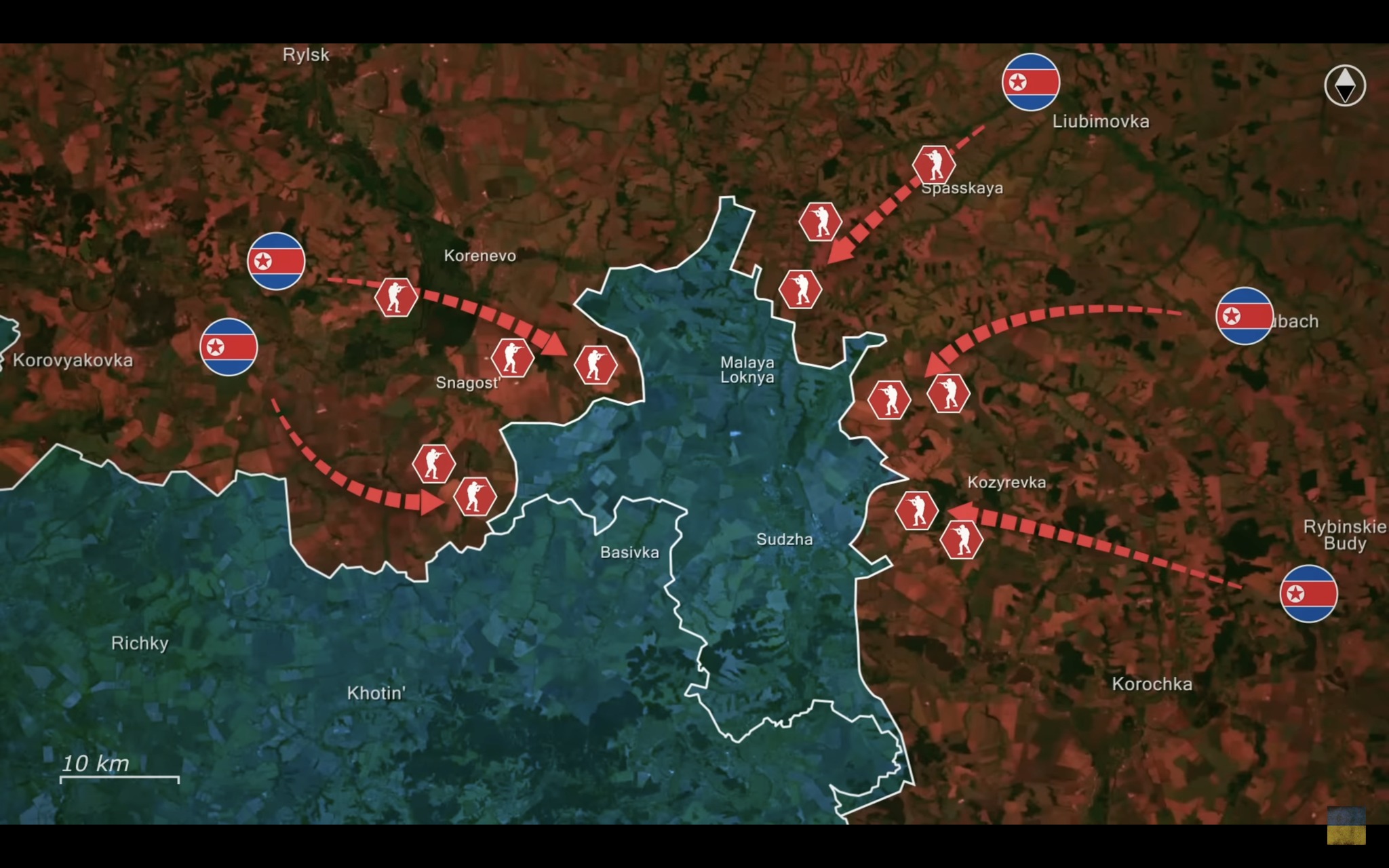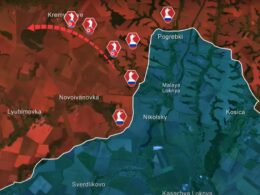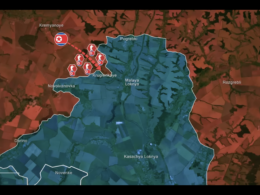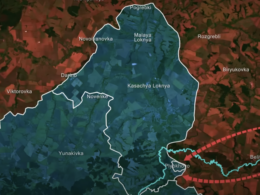Today, the most important updates come from the Kursk direction, Russia.
Here, in a striking escalation, Russian forces introduced thousands of North Korean soldiers to amplify the Russian Counteroffensive in Kursk. However, the deployment of new forces presented unexpected obstacles, from limited communication with Russian units to absence of experience, creating critical vulnerabilities in the Russian campaign.
South Korean intelligence recently informed the Ukrainian command and Western allies that the first wave of an estimated 12,000 North Korean troops has already been deployed to Kursk and could engage in combat at any moment.
This marks a significant turning point in the war. Until now, soldiers from various countries have voluntarily joined units on both sides, but this is the first instance of a third nation deploying regular forces on a large scale. Recent videos and intercepted radio communications suggest that North Korean troops, initially arriving in Vladivostok, have been transported via civilian vehicles along the E38 Kursk-Voronezh highway and are now positioned near the Kursk front.
The deployment of North Korean troops in Kursk serves a dual purpose. The first goal is to prevent the reassignment of Russian forces from critical areas along Ukraine's front lines. It is important to note that at least 30,000 Russian soldiers have already been redirected from multiple points on the front to stabilize the situation in Kursk.
The second goal of the North Korean contingent is to support Russian efforts in meeting a new deadline set by Putin to retake the Kursk region by February.
North Korea possesses one of the world’s largest and most skilled special forces units. Historically trained for infiltration operations in elevated, rugged terrain, North Korean special operations forces are well-prepared for such missions.

The Korean Peninsula, especially the area around the Demilitarized Zone, features challenging mountainous landscapes, providing North Korean forces with extensive experience in navigating and conducting operations across difficult topography.
Analysts are now actively debating the likely deployment of these North Korean forces, focusing on two primary scenarios. Some suggest the troops will concentrate on an offensive in the northern sector of the Kursk salient, aiming for a focused and operational impact.
Others argue that, due to limited real-world combat experience, North Korean forces are unlikely to be a game-changer; instead, these troops may be spread across a wider area, primarily used as standard cannon fodder to soften up Ukrainian defenses.
If we look at the topographic map, we can observe that the northern section of the Ukrainian salient features the most challenging terrain. This rugged area presents several strategic options for the North Korean forces. They could bolster the ongoing Russian operations from Korenevo, aiming to encircle and isolate Ukrainian troops positioned further north, or initiate an additional offensive from the east of Malaya Loknya, creating a new axis of attack.

Trending Now
A recent Wall Street Journal article provides insight into the situation, featuring military analysts' evaluations of video footage obtained and released by Ukrainian intelligence. The footage appears to show young North Korean soldiers, likely conscripts, preparing at a Russian base. Analysts note that these troops lack the presence and skills typical of special forces, suggesting they may have minimal training and no combat experience.
Given these indicators, analysts predict their deployment will focus on limited tactical objectives, likely used broadly to increase pressure across various fronts.
A key concern is the potential for integration and communication issues between North Korean and Russian troops. Reports indicate a shortage of translators, with only one available for every 30 to 40 soldiers. Such communication and command challenges could lead to critical vulnerabilities within the chain of command, creating exploitable opportunities for Ukrainian forces to launch counterattacks and reclaim positions in the region.

Overall, the anticipated engagement of North Korean troops introduces a new dimension to the war's progression and raises the risk of escalation. North Korean forces are expected to enter combat in early November, which may prompt a strong response from Ukraine’s allies. In the meantime, Ukrainian forces could seek to leverage the situation by targeting weak links in the chain of command, encouraging defections among North Korean soldiers and demonstrating that involving North Korean troops may ultimately prove to be a strategic miscalculation by Russian forces.
In our regular frontline report, we pair up with the military blogger Reporting from Ukraine to keep you informed about what is happening on the battlefield in the Russo-Ukrainian war.





